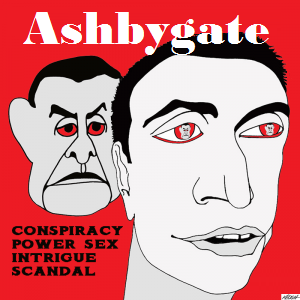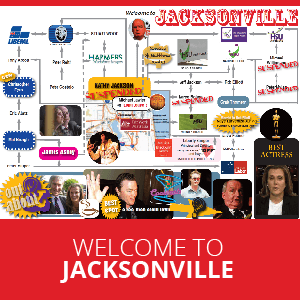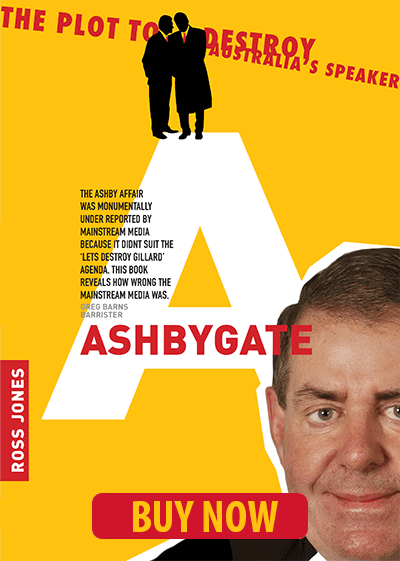Next year Queen Elizabeth will celebrate her Diamond Jubilee. In 1887, Queen Victoria celebrated her Golden Jubilee, while Republicans and Royalists fought in the streets of Sydney. Glenn Davies looks back at these turbulent times in Australia's history.
2012 is going to be a busy year on the Royal calendar with the Diamond Jubilee celebrations in the first half and the London Olympic Games in the second. It will start with the 60th anniversary of the death of George VI on 6 February and finish with the Diamond Jubilee Weekend, scheduled for the first week of June 2012. Then, a few weeks later the London Olympics will start. The calendar is going to be crowded. However, Jubilee celebrations have been a time when opponents of the idea of monarchy have been vocal. For once anyone looks beyond the pomp and pageantry that goes with Jubilees it becomes obvious that it is the celebration of the continuation of an institution that simply requires the person at the top to continue breathing.
There have been people who have spoken out against the monarchy during Jubilee celebrations. Queen Elizabeth II’s Silver Jubilee in 1977 coincided with the rise of punk music. In that year the Sex Pistols recorded ‘God save the Queen'. The lyrics mocked the royalty and aristocracy and reflected punk’s sympathy for the working class and resentment of the monarchy: “God save the Queen, the fascist regime, they made you a moron, a potential H-bomb”. The 40th (or ruby) anniversary in 1992 was the Queen’s self-titled annus horribilis and in 2002 was the Golden Jubilee.
In 1887, Queen Victoria also celebrated a Golden Jubilee. Republican sentiment in New South Wales was at its most active during 1887 and 1888. A series of public meetings held in Sydney in June 1887 sheds light both on the republican sentiment and activity of the period. In 1887, republicans twice defeated attempts in Sydney Town Hall to pass a loyal resolution congratulating Queen Victoria on her Golden Jubilee.
The Jubilee in 1887 and the centennial of white settlement in Australia in 1888 together were a time of gathering political forces on the national question. At a meeting to consider methods of celebrating the Jubilee, thirty men together subscribed 370 pounds and called for a public meeting to consider how the money should be spent. The result, according to the Sydney Morning Herald, 4 June 1887 was
“a [further] meeting composed largely of people who called themselves democrats, and were strongly opposed to any celebration whatever.”
On the evening of Friday, 3 June 1887, the resolution to celebrate the Jubilee by inviting all the Sydney Sunday-school children to a grand fete to mark the occasion was rejected by a “large majority” in favour of the amendment:
“That, in the opinion of this meeting, the proposal to impress upon the children of the colony the value of the Jubilee year of a Sovereign is unwise and calculated to injure the democratic spirit of the country”. (SMH, 16 June 1887: 5)
The loyalist meeting was outraged that the “secularists and their friends” in the audience had taken over the meeting and voted down their plan. The Mayor hurriedly closed the meeting and called another for 10 June 1887.
This time special invitation cards were printed in an effort to keep out the republicans. Instead, the republicans forged invitations and were able to take up all the strategic spots in the Town Hall and Henry Parkes watched helplessly from the stage of the Sydney Town Hall as they created mayhem. The Bulletin, 19 June 1887, described that an attempt at packing the hall with conservative loyalists seemed to be foiled by the public by breaking down the physical barriers erected against it and inundating the vestibule of the Town Hall. This prevented the motion being put.
When the meeting dissolved in disorder, its convenors retired to Mayor Riley’s office and muttered about the need for repressive Acts of Parliament and a “whiff of grape”; “reactionary talk”, as the Bulletin 19 June 1887 remarked, “that has not been heard in the English language for over a century”. If this was exaggerated, the colonial government was sufficiently moved to attempt to pass through the Legislative Assembly a resolution of loyalty to the Queen disavowing the actions of the republicans.
The Sydney Morning Herald, on 17 June 1887 reported:
“… immediately the numbers of the division were stated by the Speaker, Mr. Copeland, from the Opposition benches, called for three cheers for the Queen, and the call was responded to lustily by Opposition and Ministerialists alike. The next moment the whole of the Opposition left the Chamber, and as they did so the 53 members on the Ministerial side of the House burst into singing the National Anthem, the harmony of which resounded through the chamber, with splendid effect; and when this singing had concluded the whole House gave three vociferous cheers. Altogether the scene was not likely to be forgotten by any of those who took part in it, and who were present as spectators”.
The conservative press termed the radical demonstration the ‘republican riots’. After the meeting it was decided to ensure there was security at the next meeting.
On Wednesday, 15 June 1887, the third meeting was held to consider the Queen’s Jubilee at the old Exhibition Building in Prince Alfred Park. The focus of the meeting was to remove the stain from the colony’s reputation as a result of the disloyal amendment that had recently been carried by the “larrikin class”. The Sydney Morning Herald 16 June 1887, stated it was
“held as a protest against the disloyalty of a paltry section of the community and the ruffianism which would deny the citizens the right to speak in their own halls … the proceedings of last week made it necessary that the citizens should show to the world, by some special act, that they will not have their loyalty insulted nor their mouths closed by a small but aggressive minority”.
Thomas Walker had asked Henry Parkes in parliament “if his attention had been drawn to a circular emanating from certain persons, inviting Orangemen to attend tonight’s Jubilee meeting, and to exclude the Secularists”. The republican Walker was attempting to show that the loyal organisation had a direct connection with the administration of the New South Wales government. Walker asked Parkes if he intended to intervene to prevent the meeting “being packed by a certain section of the citizens, to the direct infringement of the right of every portion of the community to attend the meeting?” Parkes replied, “I am not, and never was, an Orangeman. I know nothing whatever of the circular referred to, and I have taken no steps to prevent any section of the citizens attending the meeting.” (SMH, 23 June 1887)
As a result, a huge crowd demonstrated their loyalty with the assistance of hundreds of police, volunteer soldiers, sportsmen and university students to keep the republicans suppressed. There were tales and rumours of probable violence and possible bloodshed. The Sydney Morning Herald, 16 June 1887 reported a loyal crowd were obviously looking for trouble as “some [loyalists] had evidently come fully prepared for all emergencies: having their overcoats buttoned up to their chins, strong sticks in their hands, and slouch hats on their heads”.
According to the Bulletin, 25 June 1887, Orangemen “massed in their hundreds”. They were admitted by password long before the doors were opened to the public and were protected by a guard of “more than 3,000” consisting of footballers, university students, members of the conservative and Primrose League, “a hollow-chested battalion badly off for brains”, prize-fighters, almost the entire police and detective force of Sydney, soldiers, sailors and other staunch defenders of the Empire. A similar but less exhaustive description was given by George Dibbs in the New South Wales Legislative Assembly a week before the relevant issue of the Bulletin appeared.
The public meeting was reported to be the largest that had ever occurred in Sydney. Present in the Exhibition Building were at least 12,000 people. Henry Parkes arrived shortly after 7 o’clock and was received with cheers from the loyal crowd. On the platform were the Mayor of Sydney, Parkes, Edmund Barton and 49 other politicians and dignitaries. The first action of the Mayor was to hold up a petition signed by 15,000 people who had declared their loyalty. Parkes then submitted the resolution to “remove from the colony the stigma of disloyalty”. The republicans were accused of cheering “Mrs John Brown”, a reference to the Queen’s rumoured liaison with her Scottish servant. The Sydney Morning Herald, 16 June 1887, reported:
“The same men who raised those cries were they who had striven to retain a certain foul newspaper in the reading-room of the School of Arts when, because of the same atrocious libels on our Queen, the decent and loyal members were excluding it”.
The Bulletin, 2 July 1887, said the issue was “Royalty versus Republicanism”:
“Let there be no mistaking the issue! The recent Sydney troubles have been between the people of Australia and Imperial Officialdom; between the Native Australian of Republican instincts and tendencies and the imported Royalist. It is the old question of Freetrade versus Protection – Home Rule versus foreign domination, and the traitors to the cause of the colonies have been paid, if not with Imperial gold, with at least Imperial titles.”
There appeared to be significant animosity within the community over the republican amendment.
The resolution was put to the massive crowd by semaphore and carried. After the overwhelming vote the meeting “became thoroughly disorganised”. The crowd kept being pushed forward onto the platform by those outside trying to get in.
The Sydney Morning Herald, 16 June 1887, stated:
“A number of exciting hand-to-hand combats took place between the occupants of the platform and those who were endeavouring to get a place on it”.
Several people from the floor appeared to get a position on the platform and during the struggle the strong cedar table which had been used by the chairman was completely smashed and the fragments scattered far and wide. The crowd calmed after about twenty minutes with the arrival of the Governor, Lord Carrington.
Henry Parkes proposed a resolution to rescind the amendment passed at the previous public meeting on behalf of the people of Australia. Parkes proposed:
“That this meeting of citizens repudiates and disowns the following amendment, carried at the Town Hall on Friday, 3rd instant, viz, ‘That in the opinion of this meeting the proposal to impress upon the children of this colony the value of a jubilee year of a Sovereign is unwise, and calculated to injure the democratic spirit of the country”. (SMH, 16 June 1887)
Parkes stated, “This meeting is a noble response to the riotous, disgraceful and scandalous insults that have been cast upon the city – and it says in triumphant tones that we will not submit to a clique of seditious and cowardly tyrants.”
His next statement was a clear example of his political position with respect to the question of national independence:
“Loyalty means something more than attachment to any royal person, it means devotion to the settled form of Government under which we live … When we express the sentiment of devoted loyalty to that illustrious lady we only declare our attachment the more to order, constitutional freedom, liberty of speech, and fair play”. (SMH, 16 June 1887)
The loyalty of Parkes appeared attached mainly to the monarch as a symbol, the representation of parliamentary democracy, and balanced government. Edmund Barton, who seconded Parkes’ resolution, alleged that the republicans of the previous meeting had denied “liberty of speech”. Barton and Parkes were in agreement. The Sydney Morning Herald, 23 June 1887, quoted the commentary of an influential London newspaper:
“We English folk are too much attached to our ancient monarchy to fear that the expression of dissatisfaction can be mistaken for incipient treason. On the whole, not withstanding all our Republicanism and Red-Republicanism, there are few institutions in this country which are so deeply rooted in the hearts of the people as the monarchy, so long at least as the monarch is the Queen”.
At this public meeting both Parkes and Barton heard the phrase “under these southern skies we mark the growth of commonwealths”. This was certainly not the first nor would it be the last time either heard use of the term “commonwealth” in political discussion in Australia. Within four years Parkes would support the concept of a Commonwealth of Australia and Barton would lead a public meeting at the Sydney Town Hall to form an Australian Federal League.
2012 will see celebrations held for Queen Elizabeth’s Diamond Jubilee. The only other British monarch to celebrate a Diamond Jubilee was Queen Victoria in 1897. Last week saw republican demonstrations outside Buckingham Palace gates by the British group, Republic. No doubt they British royals will be hoping to piggyback the Diamond Jubilee on the 2011 Royal wedding and the global reach of the London Olympic Games. However, with all this talk of dates and calendars I wonder if they are taking into consideration the end of the Mayan Long Cycle in December 2012 and the predicted end of the world. Now that would really make for an annus horribilis.









